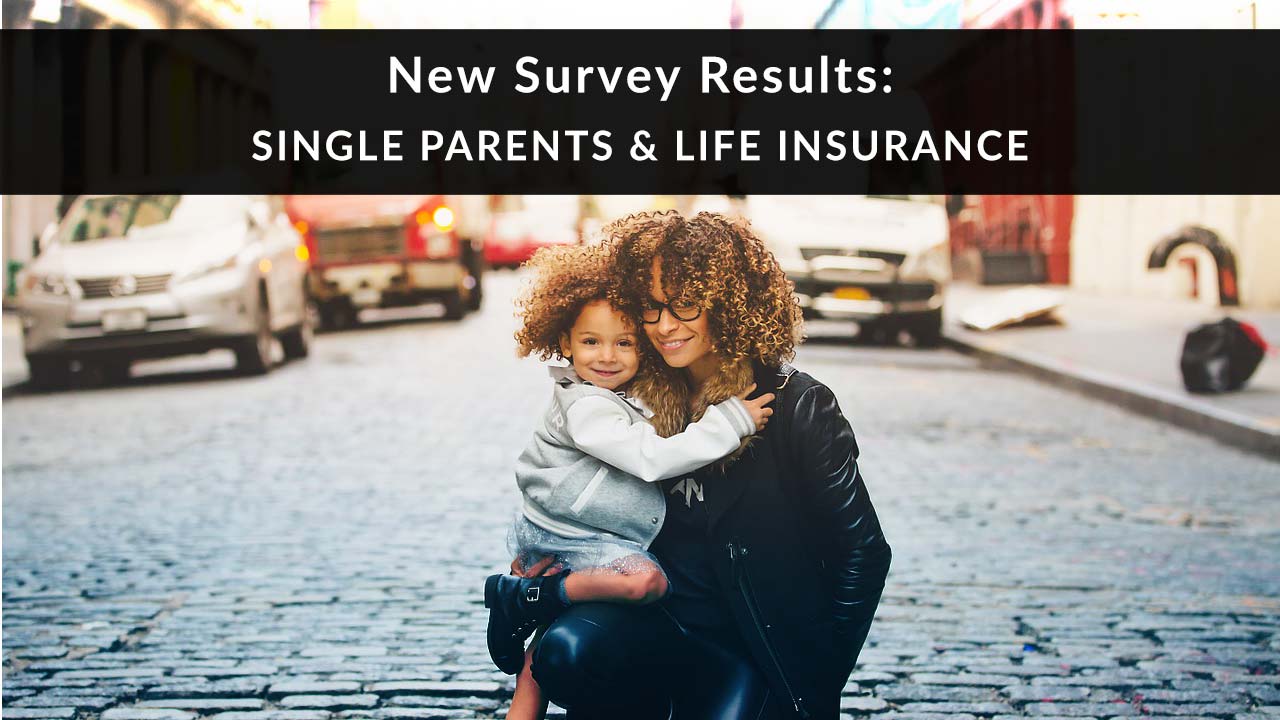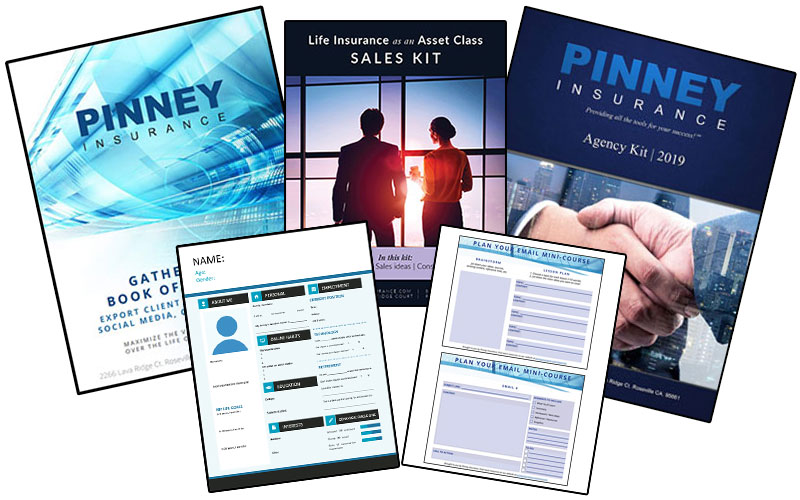
According to a recent survey from PacWealth Solutions, single parents aren’t buying life insurance. Why not?
If you said single parents aren’t buying due to “cost,” you’re right – but the survey also reveals marketing opportunities and misconceptions we can do our best to correct.
First off, let's talk briefly about why this is an important market. From 1968 to 2018, the percentage of kids living with a single parent more than doubled, from 11.8% to 26.6%. (Source: Census.gov newsroom) There are now over 17.2 million single-mom households, the second most common household arrangement in the country. And let’s not forget about the 3 million single dad households, too. (Source: Census.gov visual libary) This is a demographic that's only growing and clearly needs our help.
November 2019 Update
We've added new stats and market opportunities pulled from the 2019 Insurance Barometer Study. We also added a new universally applicable marketing approach to the bottom of the article, based on the study results and our own agents' experiences.
What the Survey Says
Nearly half of single parents with kids under 18 have no life insurance.
The demographic gets worse for single parents with 3 or more kids – 70% of this group has no coverage.
Yikes.
So Why Aren’t Single Parents Buying?
58% of survey respondents who don’t have coverage think it costs too much. Based on previous survey results from LIMRA and Life Happens, this isn’t surprising. Most consumers overestimate the cost of life insurance by more than three times the actual cost; millennials overestimate it by a whopping five times the actual cost. (Source: LIMRA 2018 Insurance Barometer)
While we’re on the subject of money, don’t be quick to assume that all single parents are cash-strapped. When it comes to single moms, there’s a growing trend that older, educated women are having babies on their own by choice. Many of them are millennials with at least some college education. Of millennial single moms, 67% have some college education, while 32% have four+ years of college education. And 42% earn 40,000+ per year. (Source: Johns Hopkins University) This is another reason not to neglect this as a possible niche – it’s not likely or fair to assume this is a group without serious buying power.
It’s (Not) All about the Benjamins
The survey also reported that only 17% of buyers said they decided based on a broker’s advice. Most preferred to do their own research, indicating a lack of trust in advisors.
So how do you build that trust? First, have unbiased reference material ready.
When you start the conversation about life insurance with a prospect, especially a single parent who’s pressed for time, expect them to want background material. Expect them to want to do their own research before coming back to you. If their research confirms your recommendation, they’ll see that you were making suggestions in their best interests and come back to you for more.
November 2019 Update
What's the most valuable information you can post for consumers on social media? 39% want a hint that explains how to save money, while 33% want a statistic that makes them look at a specific situation differently. -2019 Insurance Barometer Study
So where do you get that unbiased reference material? You can either create it yourself, or pick your favorite pieces from carriers and industry groups. A good place to start looking? Our resources page, which has links and summaries for all our monthly sales kits, all of which contain consumer-facing pieces.

Another Surprising Statistic
Okay, so we know insurance shopping isn’t high on a single parent’s priority list.
But according to the survey, the ones who do make time for it tend to buy permanent policies, not a less expensive term policy.
What does that tell us?
That once you break through the barrier of resistance (usually caused by a lack of knowledge), many single parents understand how valuable life insurance is and are willing to make the investment. If you have the patience to use tools like drip email marketing to educate these prospects, it can really pay off.
November 2019 Update
According to the 2019 Insurance Barometer Study, living benefits have a broad consumer appeal. At least half of the adult population values policy features like critical illness coverage (66%), long-term care features (66%), and continuous underwriting in the form of shared wellness data, annual health screenings, etc. (51-57%). Make sure your prospects know what these features can do, and how affordable these features and riders can be...especially if living benefits result in cost reductions as a reward for healthy behavior.
Marketing Approaches
So how do you market specifically to single parents? That depends whether you’re a traditional, hybrid, or digital agent. We’ve got strategies for all three below.
Traditional Agents: Community Outreach
20% of respondents said they'd buy life insurance through an employer.
One useful nugget from the PacWealth survey is that 20% of survey respondents said they’d buy life insurance though an employer (because it’s easy). What does that mean for you? Reach out to small businesses in your area. Tell them about these survey results. Ask if you can include information about life insurance and your agency in their new hire packets. Better yet, if it’s a medium or large employer that has a new employee orientation day, ask if you can come do a presentation for 10 minutes. Make sure you come prepared with business cards, flyers, and brochures.
Hybrid Agents: SEO & Content Marketing
Your website can do a lot of the heavy lifting for you if it’s optimized for mobile and voice queries. Single moms and dads are likely to do a lot of their communication and research on a mobile device. They’re also likely to use voice commands. Hands-free is a popular option for parents who need to juggle kids and household tasks at the same time.
We talked about optimizing your website for voice search way back in 2015 – and the main ideas haven’t changed. If you can anticipate the kinds of queries they use, you can optimize content on your website just for them.
Create pages with custom content on your website aimed at single parents. Include your contact info at the top, a quoter, and easy-to-skim bullet points or Q&A below the quoter. Also include links to non-biased source material and downloadable guides they can browse at their leisure. Then spread the word by sharing that content on social media.
Digital Agents: Paid Ads
More than 33% of parents say they use social media daily to get parenting help.
Paid ads are the fastest way to get in front of this target market. More than 33% of parents say they use social media daily to get parenting help. (Source: Forbes) If you’re using Facebook ads, for example, you can target people who like a particular page dedicated to single parents. To maximize your ad’s effectiveness, create a new landing page on your website with your quoter, frequently asked questions, and links to unbiased guides & info where prospects can do their own homework.
November 2019 Update: Instant Issue as a Solution
Carriers have made it much easier for clients to get coverage online with instant approvals. We’re not talking about simplified issue, final expense, or even most non-med policies, which still require phone interviews and can take days to receive approval and issue.
The most appealing benefit to surveyed consumers is the speed and ease of the process (63%), according to the 2019 Insurance Barometer Study.
We’re talking about term and whole life policies that offer coverage in amounts up to $10 million, for prices that compete with fully underwritten products, approved in a matter of minutes. Learn more - and get a cheat sheet with our top 5 instant issue carriers - in this post.
That's our quick look at single parents and life insurance!
Is this a niche you've had success with? Do you have any tips or success stories? Share them in the comments!
